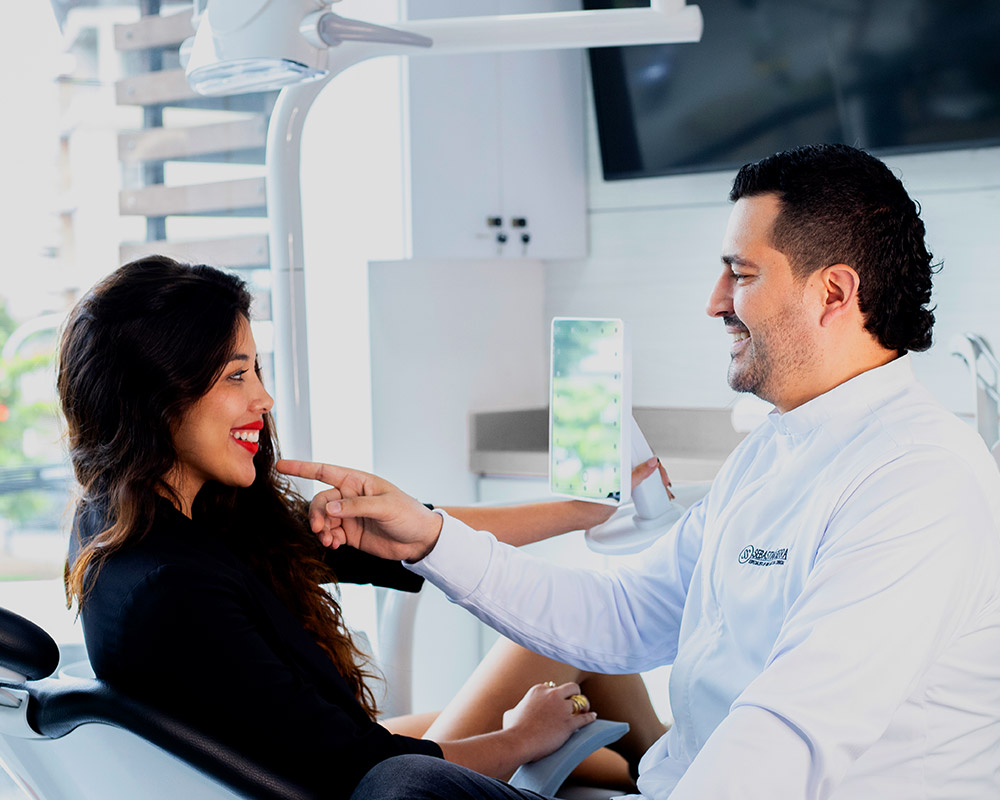We agree that we all want healthy teeth and that is why we take care of them to the extreme, we invest valuable time and money in it. But if unfortunately you already have a diagnosis of Gingivitis, you will probably be interested in learning more about this disease.
What is Gingivitis?
It is a type of periodontal disease that causes inflammation of the gums. And the periodontium is the set of ligaments that fix the tooth inside the bone socket of the maxilla. It is a fairly common disease among the population and anyone can suffer from it. There are several types:
- Acute gingivitis: it is a mild inflammation of the gums and relatively short duration.
- Desquamative gingivitis: when the gum acquires a more intense reddish tone than normal.
- Ulcerative gingivitis: it is very reddish in appearance and usually presents ulcers between the teeth. It causes bad breath and can cause fever and tiredness.
- Hemorrhagic gingivitis: causes excessive bleeding from the gums.
How is Gingivitis diagnosed?
Gum bleeding is directly related to periodontal disease, which occurs when bacterial plaque has deposited on the surface of the teeth and around the gums and ends up weakening them.
A visit to the dentist, at least every and months, will allow a timely diagnosis. The professional will review your medical and dental history, and any conditions that may be contributing to your symptoms.
- An examination of the teeth, gums, mouth, and tongue to look for signs of plaque and inflammation.
- Bleeding gums.
- Tooth loss.
- loose teeth
- Toothache.
- Bad breath.
- Receding gums or ulcers.
Causes of Gingivitis:
- Smoking or chewing tobacco.
- Poor oral hygiene promotes the formation of plaque on the teeth, which causes inflammation of the surrounding gum tissue.
- Improper brushing technique.
- Lack of use of floss or interdental brushes,
- Postponing a visit to the dentist for periodic oral cleaning or prophylaxis.
Tips to avoid Gingivitis
- Brush your teeth after each meal, at least 3 times a day.
- Use a medium hard brush and make a few movements that do not damage the gum.
- Use interdental brushes.
- The use of dental silk after each brushing.
- Gargling with antiseptic mouthwash
What foods can damage your gums?
- The Ice creams. This frozen delicacy harms the gums, especially if they were already vulnerable.
- Sugary foods are not good for firm and healthy gums,
- Highly acidic foods Citrus fruits, such as oranges, grapefruit, lemons and limes, are acidic fruits and rich in natural fructose, which can damage and wear down teeth and gums.
- White bread, and other starchy foods made with white flour like cookies and chips can be just as bad for your gums as candy.
Is Gingivitis a communicable disease?
Yes, indeed it can be transmitted through saliva between members of the same couple. However, for contagion to occur, the person who receives it must be sensitive to the bacteria that form the plaque. The recipients have to be genetically susceptible, according to recent studies. This means that when a partner or family member comes into contact with contaminated saliva, they are at risk of catching periodontal disease.
How to cure Gingivitis?
- Improve dental hygiene
- Properly use the toothbrush, floss and mouthwash
- Treatment includes professional cleaning and rinsing.
- Gingivitis is the first stage of gum disease, which if not treated properly, can progress into periodontitis.
- Studies have shown that people with periodontitis are also more prone to heart disease.

